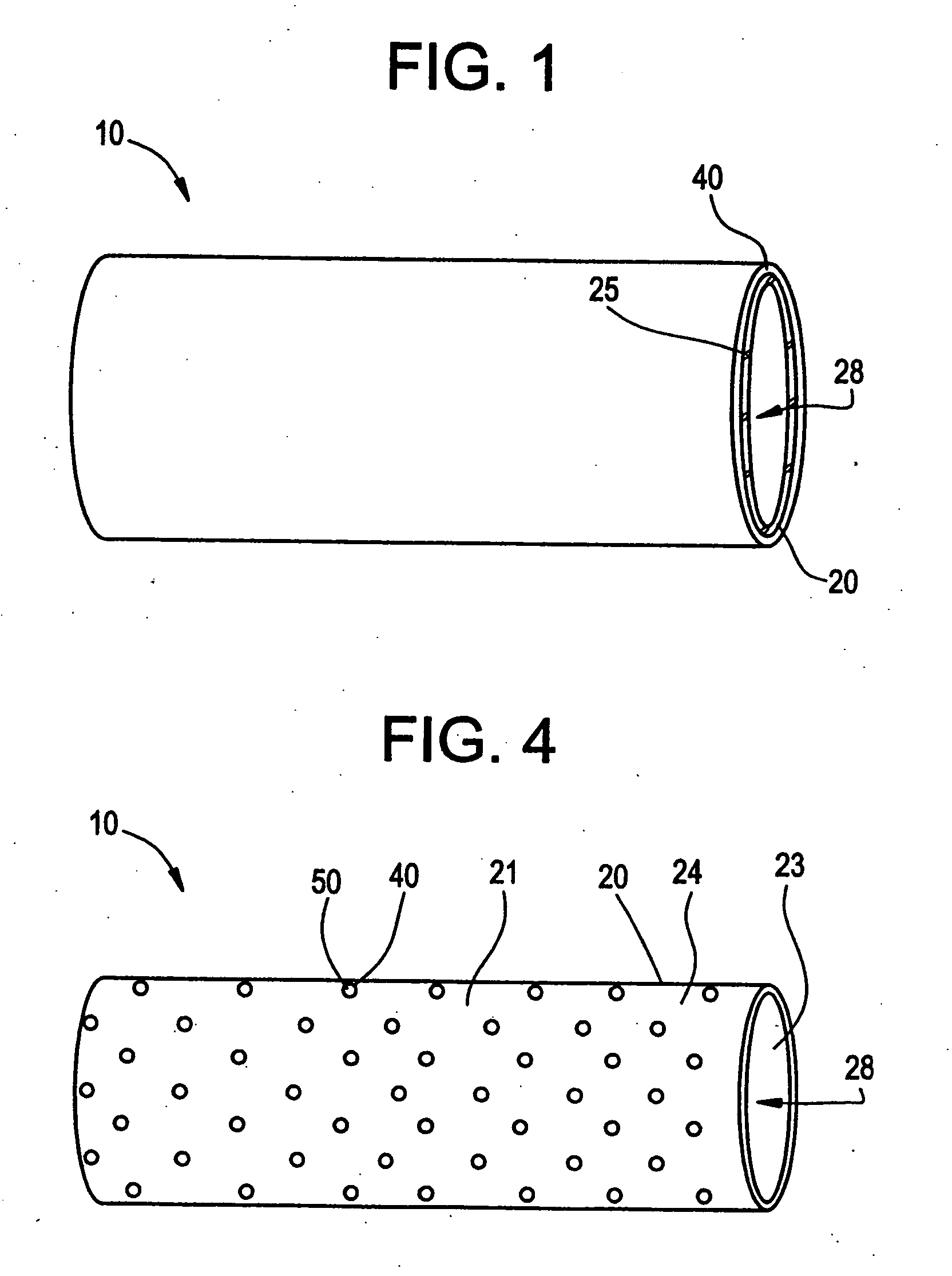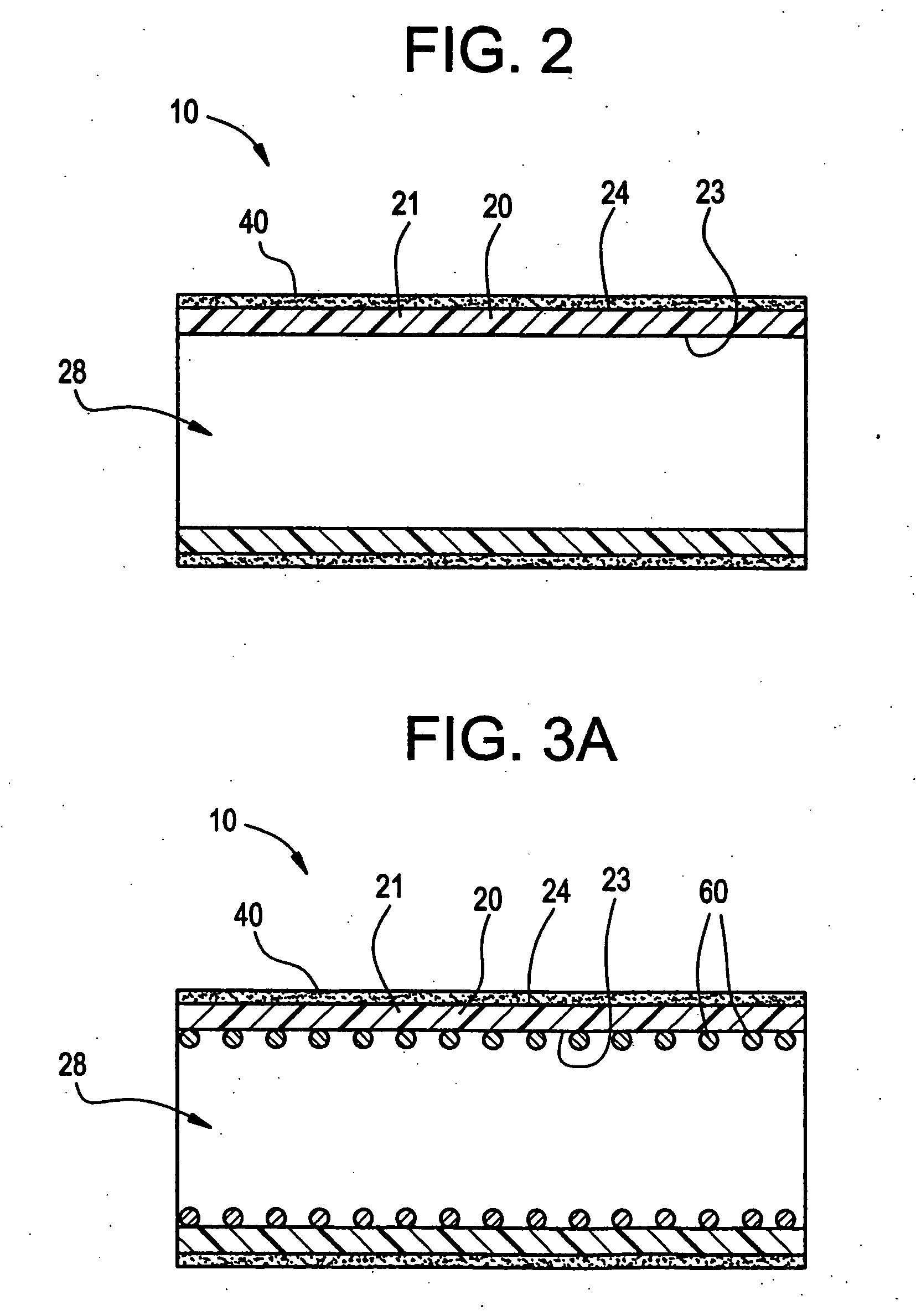Intraluminal lining
a technology of intraluminal prosthesis and lining, which is applied in the field of intraluminal prosthesis, can solve the problems of high risk of infection and/or rejection, difficult to effectively secure the endoprosthesis, and difficult to achieve the effect of mechanical securemen
- Summary
- Abstract
- Description
- Claims
- Application Information
AI Technical Summary
Benefits of technology
Problems solved by technology
Method used
Image
Examples
Embodiment Construction
[0023] The present invention is directed to a prosthesis for implantation within a body lumen. The prosthesis includes a biocompatible elongate intraluminal liner in the form of a graft, with a biocompatible adhesive being disposed on an exterior surface of the graft. The adhesive is active in an intraluminal environment so as to bond the exterior surface of the graft to an intraluminal surface of the body lumen, such as the interior of a blood vessel. Typically, implantable prostheses such as vascular grafts are held in place within a body lumen by suturing or by anchoring with a mechanical device such as a stent. With the present invention, prostheses can be properly anchored in place within a body lumen and maintain the vessel from occluding without the need for such suturing or mechanical supports, thus reducing the possibility of thrombus formation and neo-intimal hyperplasia.
[0024] With reference to the drawings, FIG. 1 depicts a prosthesis according to the present invention....
PUM
| Property | Measurement | Unit |
|---|---|---|
| biocompatible | aaaaa | aaaaa |
| mechanical | aaaaa | aaaaa |
| length | aaaaa | aaaaa |
Abstract
Description
Claims
Application Information
 Login to View More
Login to View More - R&D
- Intellectual Property
- Life Sciences
- Materials
- Tech Scout
- Unparalleled Data Quality
- Higher Quality Content
- 60% Fewer Hallucinations
Browse by: Latest US Patents, China's latest patents, Technical Efficacy Thesaurus, Application Domain, Technology Topic, Popular Technical Reports.
© 2025 PatSnap. All rights reserved.Legal|Privacy policy|Modern Slavery Act Transparency Statement|Sitemap|About US| Contact US: help@patsnap.com



